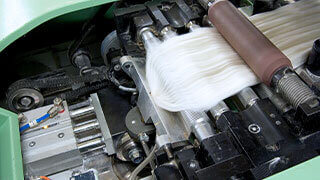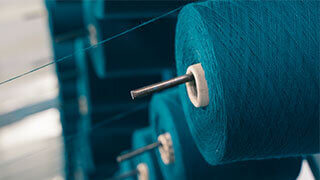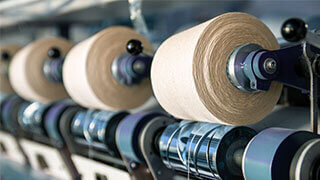Yarn Spinning: Fiber Opening, Cleaning & Carding
In any spinning operation, the requirements of the end product, or of the consumer of the yarn, will be the dictating forces in determining the fiber quality and properties that are best suited for the most economic situation. Using fiber that is of better quality than required will prove unprofitable.
Likewise, using fiber that is of poorer quality than required will result in losses as well. Most mills then find themselves in the precarious position of following a very narrow path of success where fiber quality is concerned. Correct decisions regarding the most suitable fiber properties for a given operation are paramount for maintaining profitability.
Specific fiber properties vary in their importance according to the spinning system employed. These differences in importance are due to the mechanical design of the particular spinning system and the physics involved.
Opening
After the appropriate fiber properties have been decided on, the selected bales are prepared and arranged for their placement into a laydown. A typical laydown may include as few as 40 bales or as many as 90 or more.
This configuration ensures proper dispersion of the many different variables from bale to bale and also places them in a position that the top feeder or bale plucker can use them. Usually, this is in a linear fashion but other methods of feeding may also be found.
The bale plucker moves back and forth along the laydown removing just a small amount of fiber from each bale on every pass. This ensures adequate blending by minimizing the amount of fiber removed from each bale and maximizes the number of bales fed per unit time.
From the plucker, the opened tufts are moved along using fans, airflow, and a series of ducts, much like those used in the heating and air conditioning systems in residential and commercial buildings. The fiber flows in this fashion and is directed to the next machine in this process.
To further ensure good blending, a multi-cell blender may be used. This machine randomly fills and then empties its chambers back into the process flow.
Cleaning
From the opening and blending processes, the open fiber tufts are transported to the first of what may be multiple cleaning machines or steps. The first cleaning machines are usually designed to be coarse cleaners. That is, they are designed to remove the larger and heavier trash particles. Fine cleaners will be found last in the cleaning line and just before carding.
Cleaning machines use a number of very basic principles in order to accomplish their goal. The trash or unwanted contents in the opened tufts of fiber are normally denser and heavier than the good fiber.
These principles take advantage of this. The machines’ designs use gravity, centrifugal force, and airflow combined with some type of beating action.
Usually, grid bars may be found under the beaters in most cleaning machines. The unwanted trash falls out between the bars and is sucked away to a central collection point. The grid bars can be adjusted to take out more or less trash depending on the fiber being used, the spinning process, and the end product requirements.
Batt Formation
After opening and cleaning, the fiber is transported to the carding line. Before the fiber gets to the carding machine, it must be prepared for that process by going through batt formation.
The batt former is more commonly known as a chute feed. The chute feed further opens the fiber tufts and forms a continuous matt-like (batt) structure. This operation ensures that the carding process will receive a consistent weight of material in order that the output of the card will be as consistent and level as possible.
Carding
Many have called carding the foundation process of yarn manufacturing. This is partly due to the fact that it is at the carding stage that the previously loose, unoriented cotton fiber first takes on a textile form sliver. The card is made up of a series of cylinders, which are wire-wound. This wire has tiny teeth cut into it and each tooth serves to transport a small number of fibers through the machine. There are also wire-covered surfaces called flats that come in close proximity to the main cylinder. This is the area where most of the carding action takes place. The wire-wound cylinders acting against one another, in conjunction with the flats, are the actions that accomplish carding’s main purpose to straighten, align, and parallel the fiber.


